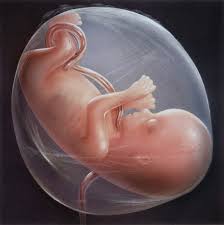
Low amniotic fluid during pregnancy is a serious condition. Amnioinfusion is done by introducing saline into the amniotic sac through a catheter placed in the cervix during labor. This is typically done during labor if there are fetal heart rate abnormalities. If you have low amniotic fluid during labor, your health care provider might consider a procedure in which fluid is placed in the amniotic sac (amnioinfusion). Most cases of oligohydramnios in the third trimester wont result in any complications for your baby. He or she also might recommend drinking more fluids - especially if you’re dehydrated. Is low amniotic fluid dangerous for my baby Not usually. If you’re less than 36 weeks pregnant, your health care provider will review your baby’s health, discuss why you might have low amniotic fluid and recommend monitoring your pregnancy with fetal ultrasounds. If you have low amniotic fluid and you’re 36 to 37 weeks pregnant, the safest treatment might be delivery. – Certain health conditions in the baby, such as restricted growth or a genetic disorder

– Use of certain medications, such as (ACE) inhibitors Some important facts about the amniotic fluid are: It protects the baby from heat or from getting cold. – Certain health conditions in the mother, such as chronic high blood pressure A shortage of amniotic fluid or its absence can be harmful to the baby. – The placenta peeling away from the inner wall of the uterus - either partially or completely - before delivery (placental abruption) Various factors can contribute to low amniotic fluid in pregnancy, including: But short-term treatment options are available and can be helpful in certain situations. If you have low amniotic fluid, what happens next will depend on the cause, severity, your baby’s gestational age, your health and your baby’s health. Can a baby survive without amniotic fluid at 19 weeks There are varying degrees of PPROM, but Lauren Streicher, M.D., an associate professor of clinical obstetrics and gynecology at Northwestern University Feinberg School of Medicine, tells SELF that having it occur at 17 weeks is really bad. Theres no treatment that can completely correct this condition. In addition, the amount of amniotic fluid reflects the baby’s urine output - a measure of a baby’s well-being. Oligohydramnios involves the development of too little amniotic fluid rather than too. Amniotic fluid also keeps the umbilical cord from being compressed between the baby and the uterine wall. Oligohydramnios, like polyhydramnios, is an amniotic fluid disorder. But short-term improvement of amniotic fluid is possible and might be done in certain circumstances.ĭuring pregnancy, amniotic fluid provides a cushion that protects the baby from injury and allows room for growth, movement and development. Some risks include, the baby growing too slowly, problems during labor and birth, oxygen being caught off to the baby, and a need for emergency cesarean surgery.

No treatment has been proved effective long term. Low amniotic fluid (oligohydramnios) is a condition in which the amniotic fluid measures lower than expected for a baby’s gestational age.

What are the treatment options for low amniotic fluid during pregnancy?


 0 kommentar(er)
0 kommentar(er)
